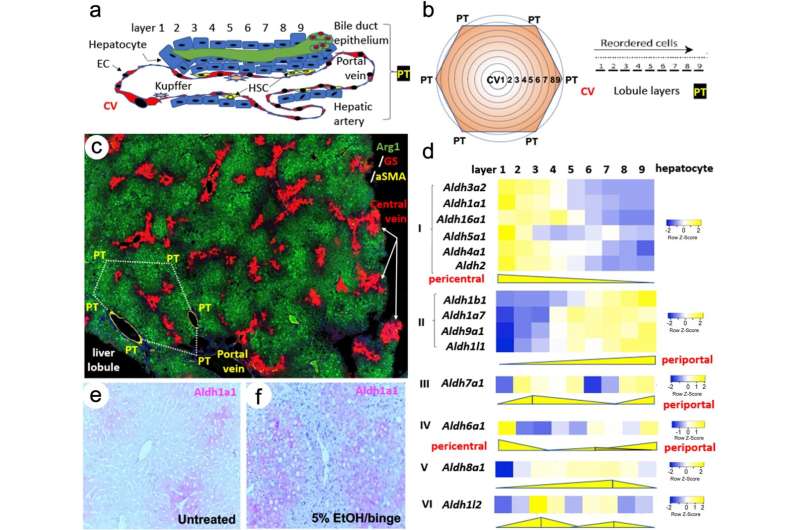This article has been reviewed according to Science X's editorial process and policies. Editors have highlighted the following attributes while ensuring the content's credibility:
fact-checked
proofread
Acetaldehyde dehydrogenases in liver zonation and liver cancer

A study, published in the journal Gene Expression and led by Brady Jin-Smith from the Department of Pathology at Tulane University, focuses on ALDHs, a group of key enzymes that catalyze the irreversible oxidation of various aliphatic and aromatic aldehydes to the corresponding carboxylic acids. Understanding their distribution and function within the liver is key to addressing liver diseases, including cancer.
The team utilized data from public databases like the Human Protein Atlas to analyze the expression patterns of ALDHs in normal adult livers, liver zonation, hepatocellular carcinoma (HCC), and cholangiocarcinoma (CCA). They examined how these enzymes are distributed across different liver zones, which is crucial for understanding their role in liver homeostasis and disease.
ALDH2 is a potential therapeutic target for liver disease. This enzyme can alleviate alcoholic liver disease by preventing acetaldehyde exposure in the reduction of signal transducer and activator of transcription one methylation.
The study revealed that ALDHs exhibit distinct expression patterns in different liver zones. For instance, some ALDHs are primarily found in the pericentral zones, while others dominate the periportal zones. These patterns shift significantly in liver cancers. In HCC, for example, certain ALDHs are upregulated, suggesting a potential role in cancer progression. In contrast, other ALDHs are downregulated, hinting at a loss of protective function.
The researchers concluded that the diverse spatial and temporal expression of ALDHs in the liver plays a critical role in maintaining liver health. Alterations in their expression and function are closely linked to the development of liver diseases, including HCC and CCA.
This study underscores the importance of ALDHs in liver health and disease. By mapping their zonal distribution and understanding their altered expression in liver cancers, new strategies for diagnosis, prognosis, and treatment can be developed. Further understanding of ALDH genes in the liver, in particular their relation to liver zonation, may help us to develop more accurate and personalized strategies for the treatment of liver diseases such as HCC and CCA.
More information: Brady Jin-Smith et al, Acetaldehyde Dehydrogenases in Liver Zonation and Liver Cancer, Gene Expression (2023). DOI: 10.14218/GE.2022.00022















